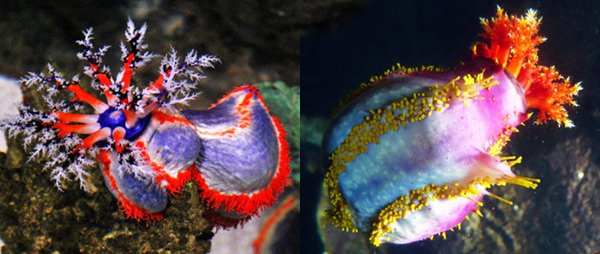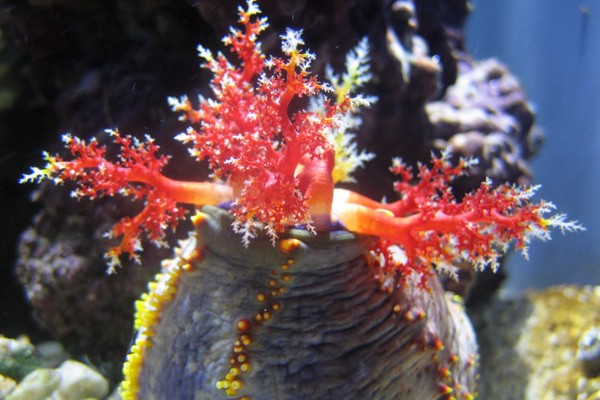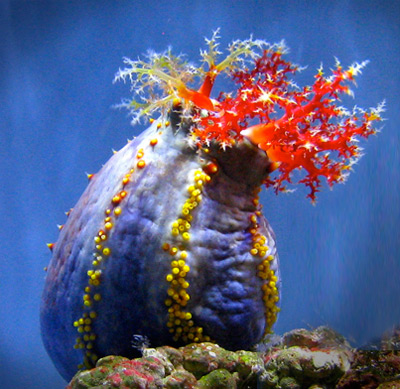In several posts here at Saltwater Smarts, I’ve mentioned that certain marine organisms routinely offered in the aquarium trade should come with a warning label—especially for novice hobbyists. In these cases, I’m usually referring to animals that are really gorgeous or exotic-looking (hence hard to resist) but either difficult to keep alive or dangerous to tankmates for one reason or another. In the case of the sea cucumbers known as sea apples (Pseudocolochirus spp.), you get a bit of both worlds in one enticingly beautiful package.
What they look like
Sea apples have round to ovate bodies that are brightly colored in shades of red, blue, purple, and yellow (or combinations thereof). The oral cavity is fringed with brightly colored, feathery feeding tentacles, and colorful tube feet appear in rows along the body. These holothurians can reach a maximum size of around five to six inches, but they are capable of dramatically deflating if stressed or, if dissatisfied with their placement, inflating in an effort to drift to a more suitable spot.

Okay, sea apples sound like really beautiful, fascinating animals, right? So why do I think they should come with a warning label? Actually, there are two reasons:
1. The starvation situation
Sea apples are suspension feeders that need ample quantities of phytoplankton to survive. You can purchase or culture phytoplankton to feed these animals, but satisfying their demand and keeping them alive long term requires a high degree of effort and dedication. The sad fact is, most sea apples kept in aquariums gradually starve to death.
2. The poison problem
Also worrisome is the fact that these Holothurians are capable of releasing a deadly toxin into the water when sufficiently stressed (e.g., getting trapped on a powerhead intake or munched on by a fish). This toxin, called holothurin, can wipe out all of a system’s livestock. What’s more, when under extreme duress, sea apples are known to eviscerate themselves, expelling sticky, stringy guts in addition to those toxic chemicals.

Still want one?
If you’re still determined to keep a sea apple despite these admonitions, be sure to:
- House it in a sizeable system dedicated to its needs.
- Screen off any pump or powerhead intakes.
- Allow the specimen ample room to move and avoid housing it with corals or anemones known to pack a potent sting.
- Avoid any fish tankmates that might be inclined to nip at those feathery feeding tentacles.
- Provide vigorous protein skimming and use activated carbon in the system as a hedge against toxin release.
- Keep plenty of clean/heated/aerated salt water on hand for major water changes if poisoning is suspected.
- Keep an eye out for unusual behavior among the other livestock that might signal poisoning (and therefore the need for an immediate water change).
- Maintain very stable water parameters and meticulously attend to water quality.



